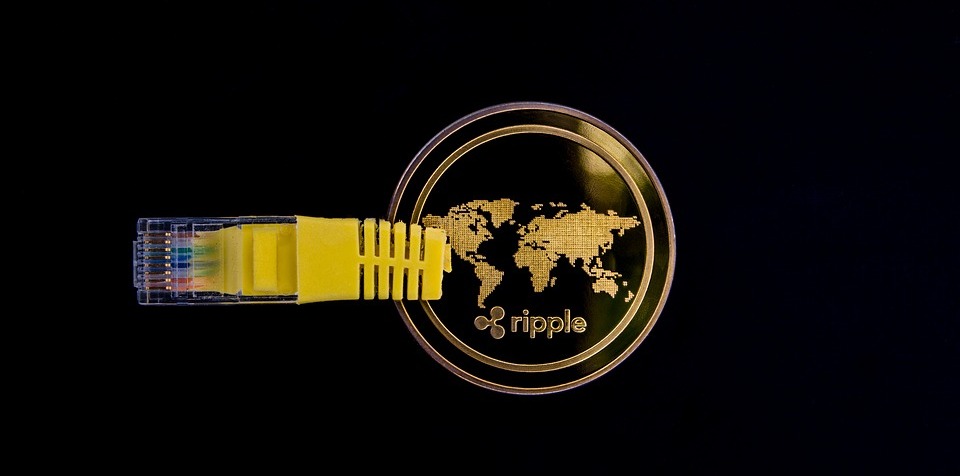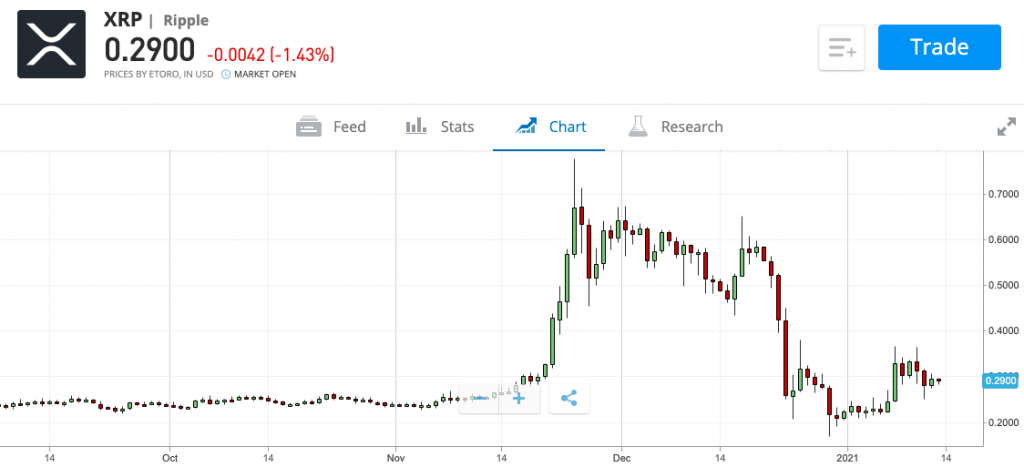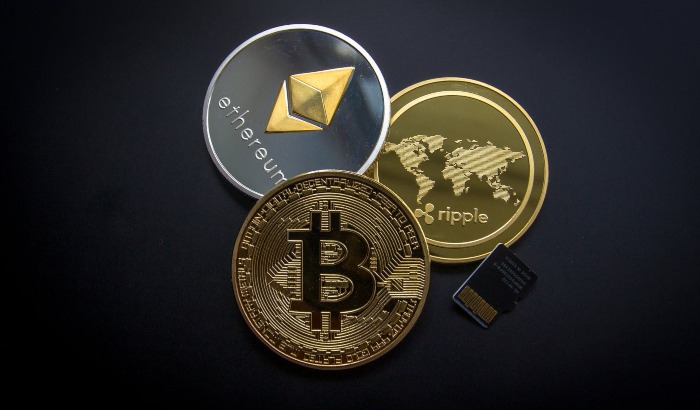Ripple Trading and Brokers 2025
Ripple is one of the most popular cryptocurrencies in the world by trading volume, but what makes its history and technology different from those of its competitors? Before you start investing in Ripple in the UK, it’s worth taking the time to research the asset. To help you get started, we’ve covered the basics below, as well as chart analysis, day trading risks and the best Ripple coin trading platforms in 2025.
Note, the Financial Conduct Authority banned the sale of crypto-derivative products such as CFDs in the UK from January 2021. Fortunately there remain alternative ways to invest in the digital coin, including longer-term investing strategies, explained further below.
Ripple Brokers
-
Traders can speculate on popular cryptos with commissions as low as 0.05% and high leverage up to 1:200. Additionally, the broker continues to improve its offering by introducing crypto futures as well as trading contests with real prizes.
Crypto Coins
- BTC
- LTC
- ETH
- XRP
- EOS
- ADA
- DOT
- SOL
- UNI
- LINK
- DOGE
- BNB
- ICP
- SAND
- more
Crypto Spread Crypto Lending Platforms 0.05% BTC, 0.05% ETH No Own Crypto Staking Minimum Deposit Regulator No $0 -
IC Markets offers 20+ cryptocurrencies which are tradable via CFDs, including lesser-known tokens such as Avalanche, Kusama and Uniswap. Commission-free trading is available, and experienced crypto traders can access high leverage up to 1:200 in the MetaTrader platforms.
Crypto Coins
- BTC
- BCH
- DOT
- DSH
- EMC
- EOS
- ETH
- LNK
- LTC
- NMC
- PPC
- XLM
- XRP
- ADA
- BNB
- DOG
- UNI
- XTZ
Crypto Spread Crypto Lending Platforms BTC 42.036 No MT4, MT5, cTrader, TradingView, TradingCentral, DupliTrade, Quantower Crypto Staking Minimum Deposit Regulator No $200 ASIC, CySEC, FSA, CMA -
OKX continues to offer a superb selection of 400+ tokens including Bitcoin and Ripple. You can buy and sell tokens or trade cryptos on margin via derivatives, including perpetual swaps, options and futures. OKX stands out for its low fees, extensive range of tokens and speedy crypto transactions.
Crypto Coins
- BTC
- XCH
- ETH
- OKB
- OKT
- LTC
- DOT
- ADA
- DOGE
- XRP
- USDT
- ICP
- BCH
- LINK
- XLM
- ETC
- MATIC
- THETA
- UNI
- TRX
- EOS
- FIL
- XMR
- NEO
- USDC
- AAVE
- SHIB
- LUNA
- KSM
- BSC
Crypto Spread Crypto Lending Platforms Variable Yes AlgoTrader, Quantower Crypto Staking Minimum Deposit Regulator No 10 USDT VARA -
XTB offers an excellent selection of cryptos with more than 50 digital currencies. Spreads are tight starting from 0.22% on BTC and leverage reaches 1:5. The xStation platform also provides intra-crypto pairs like ETH/BTC and DSH/BTC. With the capability to trade cryptos 24/7, XTB ensures a secure environment with transparent accounts for cryptocurrency trading.
Crypto Coins
- ADA
- BTC
- BCH
- DSH
- EOS
- ETH
- IOTA
- LTC
- NEO
- XRP
- XLM
- TRX
- XEM
- XLM
- XMR
- DOGE
- BNB
- LINK
- UNI
- DOT
- XTZ
Crypto Spread Crypto Lending Platforms 0.22% No xStation Crypto Staking Minimum Deposit Regulator No $0 FCA, CySEC, KNF, DFSA, FSC, SCA, Bappebti -
BitMEX continues to offer a highly competitive crypto trading environment, with cheap $1 contracts and leverage up to 1:100. The broker’s proprietary platform offers cutting-edge trading features, including a customizable order book, a depth chart and dozens of technical indicators.
Crypto Coins
- BCH
- BTC
- ETH
- LTC
- XRP
- TRON
- EOS
- XMR
- ADA
- DOGE
- BNB
- DOT
- SOL
- SHIB
- AVAX
- GAL
- NEAR
- SUSHI
- AXS
Crypto Spread Crypto Lending Platforms -0.01% maker, 0.075% taker No BitMEX Web Platform, AlgoTrader, TradingView, Quantower Crypto Staking Minimum Deposit Regulator Yes $0.01 Republic of Seychelles -
You can buy and sell 250+ crypto assets with fiat currencies or in crypto pairs using the straightforward mobile app or through Uphold's browser-based account homepage. This is significantly more than many rivals. You can also earn up to 16% APY by staking one or more out of 32 valid tokens, or send tokens to an external wallet.
Crypto Coins
- BTC
- BTCO
- AAVE
- ALCX
- DYDX
- INH
- XYO
- API3
- GHST
- LSK
- AUDIO
- GLMR
- NMR
- CAKE
- GODS
- REQ
- CHR
- TRB
- DAO
- ROOK
- XRP
- ETH
- BAT
- ADA
- ALGO
- ATOM
- AVAX
- AXS
- BCH
- BAL
Crypto Spread Crypto Lending Platforms Up to 1.5% No Desktop Platform, Mobile App Crypto Staking Minimum Deposit Regulator Yes $0 -
IQCent offers 17 crypto pairs through its proprietary terminal, including Bitcoin, Ethereum and Litecoin. Leverage on crypto CFDs is capped at 1:10, whilst binary options payouts vary by token but remain competitive. OTC assets, for example, pay out up to 95%.
Crypto Coins
- BTC
- ETH
- LTC
- ETC
- DOGE
- MATIC
- QNT
- SOL
- XRP
- USDT
- XMR
- BNB
Crypto Spread Crypto Lending Platforms Variable No Online Platform, TradingView Crypto Staking Minimum Deposit Regulator No $250 IFMRRC -
BlackBull supports short-term trading on 11 cryptos including Bitcoin and Ethereum with up to 1:5 leverage. Digital tokens are paired with USD, while the broker’s ‘Daily Opportunities’ excel for their excellent insights into emerging trends in the cryptocurrency space.
Crypto Coins
- BTC
- ETH
- XRP
- LTC
- ADA
- POLY
- XFET
- XINJ
- XNAKA
- XAX
- XCOTI
Crypto Spread Crypto Lending Platforms 245 No BlackBull Invest, BlackBull CopyTrader, MT4, MT5, cTrader, TradingView, AutoChartist Crypto Staking Minimum Deposit Regulator No $0 FMA, FSA -
InstaTrade offers a modest selection of around 12 cryptos against the USD, tradable via CFDs. Fees are low, especially for major assets like BTC/USD with spreads from 0. There's also a dedicated cryptocurrency blog with useful technical insights to support short-term trading decisions.
Crypto Coins
- BTC
- ETH
- XRP
- LTC
- SOL
- UNI
- DOGE
- BCH
- FIL
- ADA
- DOT
- LINK
Crypto Spread Crypto Lending Platforms 0 No InstaTrade Gear, MT4 Crypto Staking Minimum Deposit Regulator No $1 BVI FSC -
You can trade over 20 of the most popular cryptos with leverage up to 1:200 seven days a week, although direct trading of the underlying asset like purchasing Bitcoin or Ethereum is not facilitated. The selection of tokens also trails Eightcap, which picked up our 'Best Crypto Broker' award, offering 100+ crypto derivatives.
Crypto Coins
- BTC
- ETH
- DSH
- LTC
- BCH
- XRP
- EOS
- EMC
- NMC
- PPC
- DOT
- XLM
- LINK
- DOGE
- XTZ
- UNI
- ADA
- BNB
- AVAX
- LUNA
- MATIC
- GLMR
- KSM
Crypto Spread Crypto Lending Platforms Floating No MT4, MT5, cTrader, AutoChartist, TradingCentral Crypto Staking Minimum Deposit Regulator No $200 FSC
What Is Ripple?
Ripple (XRP) was released in 2012, by Chris Larsen and Jed McCaleb and is the third-largest crypto coin by market cap after Bitcoin and Ethereum, at over $13.09 billion. The XRP daily trading volume today is around $8.39 billion.
Since the coin’s creation, Ripple Inc. is now more widely known for its cross-border digital payment system, RippleNet. The system allows for cheap and fast money transfer in any fiat or digital currency and is operationally comparable to the SWIFT payment system.
Whilst XRP trading activity has been generally steady over the last few years, the success of Ripple Inc. has been particularly notable. The system is now used by over 300 financial institutions, including Santander and MoneyGram. Rumours on several Ripple trading news sites have also suggested that the start-up is preparing to launch its own trading platform.
What Makes Ripple Unique?
Unlike other cryptocurrencies like Bitcoin and Litecoin, Ripple does not use blockchain mining or proof-of-work systems to verify and confirm transactions. Instead, it uses a consensus protocol through a group of servers. The consensus is managed by a small committee of validators who maintain the transaction ledger.
As a result, Ripple transactions are less costly and more energy-efficient than Bitcoin. Ripple transactions are also confirmed by validators in 3 to 5 seconds, compared to Bitcoin’s 10 minutes. Furthermore, Ripple is owned by a private company, Ripple Inc., whereas Bitcoin and other cryptocurrencies are not controlled by a central authority.
Why Trade Ripple?
- Leveraged trading – Margin trading allows you to increase your position size without needing to deposit the full XRP trading value. Leverage ratios can be fairly high at some brokers, up to 1:30 in line with FCA regulations, which can maximise profits if used correctly.
- Volatility – Cryptocurrencies are a highly volatile market and therefore can be profitable. Volatility exists because digital assets like XRP are still relatively new in the financial world and are not widely regulated. This uncertainty means that the true value of XRP is difficult to determine.
- Established brokers – As the third most popular cryptocurrency in the world, you can trade Ripple pairs at numerous leading brokerages in the UK. Make sure to choose a transparent and trustworthy broker who is well-established in the market.
- Trusted – Several renowned banks are already using the RippleNet system, including the Bank of America, UBS and Santander. As the list grows, Ripple’s reputation and profile will continue to rise.
- Low fees – Trading cryptocurrencies is generally low in costs, with small transactions fees and minimum order requirements. Compared to other coins, XRP also has a very low cost per coin of $0.29 at the time of writing, which is particularly inviting for long-term buy and hold investors.
- Similar to FX – Intraday trading of both forex and cryptocurrencies have some notable similarities. If you’re already familiar with applying risk management techniques and day trading strategies to forex investing, then XRP trading shouldn’t feel like a completely new ball game.
Risks Of Trading Ripple
- Leverage – Trading XRP or any other asset with leverage can increase your losses if not properly understood. It’s worth noting that with margin trading, you can lose more than your original deposit.
- Volatility – Whilst volatility can open up profitable opportunities, it can also lead to losses. Ripple and other cryptocurrencies are high risk products which can change rapidly within the space of just a few minutes.
- Unknown market – Cryptocurrencies are a new financial market which are still relatively misunderstood compared to forex and other assets. Consequently, the future of Ripple and other cryptocurrencies remains ambiguous.
- Regulations – The cryptocurrency market is still widely unregulated and is not overseen by a central authority, leading to issues like wash trading. In many nations, rules are still emerging which can affect how coins like XRP can be traded. In the UK, for example, it is now against the law for regulated brokerages to distribute and sell crypto-derivatives such as CFDs, options and futures to retail clients. Other standard insider trading regulations also apply.
How To Start Trading Ripple
1. Look At Price Data
Before you start trading Ripple (XRP), you will need to familiarise yourself with the trading volume and price history of the asset. You can find detailed XRP information on a live trading volume chart, an essential price analysis tool. Most charts also come with a range of timeframes and indicators that you can apply and customise.
An XRP trading volume graph can also help you to forecast any future trends which could be profitable. You can find the Ripple trading coin symbol at any reputable trading platform or exchange. A TradingView chart is an excellent example, which also offers XRP investing ideas and tips, as well as a forum.
2. Choose A Broker
The quality of your broker or exchange will also significantly impact your trading experience, so make sure to do your research before signing up. You should consider how much you are willing to pay in fees and what other additional features you could benefit from.
Crypto trading costs are generally based on maker and taker fees, which depend on whether your order is filled immediately or not. At Binance, for example, maker and taker fees range from 0.02% to 0.10%. Binance also acts as an XRP trading exchange and wallet if you simply want to buy, sell or hold coins.
Some sites also offer additional social or educational tools, such as Telegram or a community help centre. If you’re new to trading, these can act as excellent training grounds, where you can gain valuable insight from other experienced traders.
3. Make A Deposit
Your broker will likely require a minimum deposit when opening an account. This is usually available via bank transfer and credit card with fiat currencies, but some will also allow you to deposit using other cryptocurrencies.
Beginners should start trading with a small amount, until they are more accustomed to the platform and how trading works. Note that the broker might also charge fees on deposits and withdrawals. Transaction times may also vary.
4. Strategies
Strategies and risk management techniques are a vital element of trading. Make sure to also utilise any demo accounts offered by your provider. These can be a great tool for practicing your strategies before committing to real trading.
Technical Analysis
Technical analysis is the process of studying historical prices to identify trends and predict future price movements. Market psychology is a huge factor in these trends, which often gets repeated over time. Analysts take this into account when applying certain tools to their charts.
Trend lines, for example, can give you a good initial impression of the direction of the trend (upwards, downwards or sideways). These can be applied on top of your standard Candlestick charts to show any linear patterns. You could also use moving average lines which, when crossed over on the chart, will suggest a potential future uptrend.
News
Financial and economic news is also a significant catalyst to price movements of cryptocurrencies, especially given their uncertain and volatile nature. At the end of 2020, for example, Ripple saw a 63% crash in the space of four days, after a high-profile lawsuit was filed against the start-up by the US Securities and Exchange Commission.
Short-Term Vs Long-Term
If you’re new to cryptocurrency trading, then long-term investing might be a good choice for you. This is also known as HODL (‘hold on for dear life’) investing, whereby you buy at a low price and ride bullish trends until the price is high enough to sell. This is a far easier strategy than intraday trading in the short-term, but it depends on your outlook and appetite for risk.
Whilst long-term investing requires little effort and time, it does require patience, which might not suit someone who would be tempted to sell too early. Long-term traders are also at risk of mis-timing the market, as they get drawn in when prices and excitement are high.
Short-term trading, on the other hand, can be extremely risky, with more opportunities for traps and crashes. Cryptocurrency markets are far more volatile and changeable than forex or stocks, for example. As a result, short-term trading requires a lot of effort, capital and a solid understanding of technical analysis.
Nonetheless, short-term trading can present significant opportunities if you know how to play the markets. It can allow you to take small but consistent gains, as long as the time and effort is invested.
Risk Management
Whilst risk is unavoidable in any kind of trading, there are ways you can manage it effectively. The first and most important consideration is that you should never risk more than you can afford to lose. Some experts advise that you should not use more than 10% of your budget. From here, there are three main strategies that you should employ.
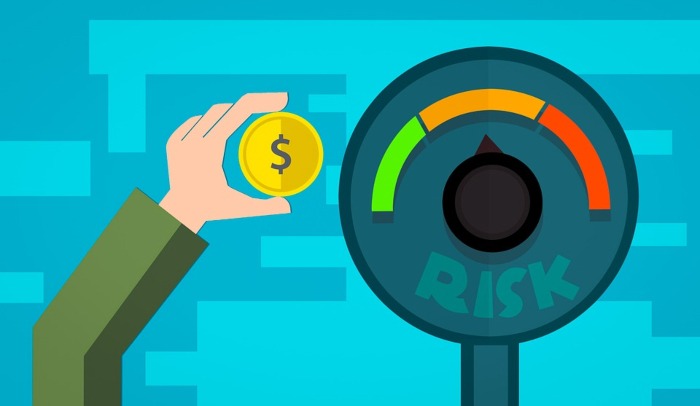
First, consider your position size, which takes into account how many XRP coins you are willing to initially invest and how much you can afford to lose if the trade fails. There are several methods for achieving this, including the Kelly Criterion or the ‘sharks and piranhas’ approach.
You should also consider the risk/reward ratio, which compares the actual level of risk against the potential returns. The ratio therefore allows you to understand when to enter a trade. A lower ratio would represent a higher level of risk. Experts suggest that you should not trade with a ratio lower than 1:1.
Finally, you should always try to employ stop loss and take profit orders. Stop losses will close an open position if the price drops and reaches a certain level, whilst Take Profit will close positions when prices rise to a certain point.
If you want to trade Ripple (XRP), look out for a trading platform or app that can facilitate stop loss and take profit orders. Some investing websites also offer a trading calculator which can determine risk levels for you.
Ripple Automated Trading
To boost your XRP trading strategy, using automated investing tools like a Ripple trading bot can help to uncover profitable opportunities. These tools use trading signals and algorithmic technology to eliminate the psychological and emotional limitations of investing.
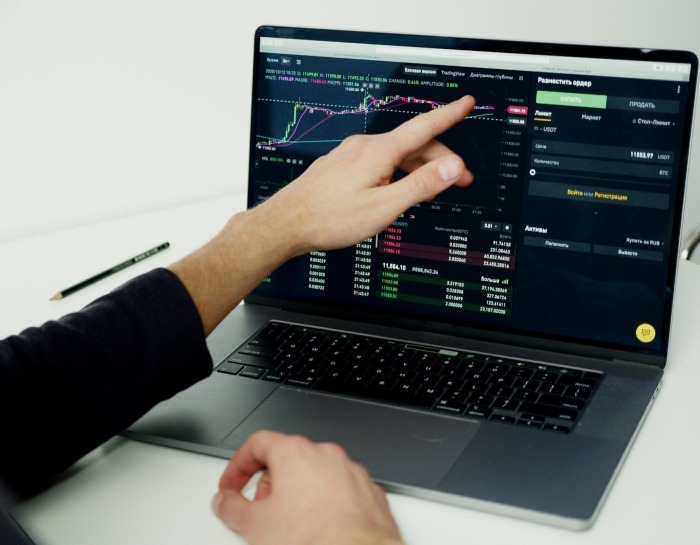
More importantly, crypto bots like Cryptohopper allow you to track Ripple price trends and use expert trading tools without needing to know how to code. You can also backtest any new strategies until they are effective.
Cryptohopper is available on most of the top XRP trading platforms, exchanges and names, including Coinbase Pro, Trading 212, Binance, Bitfinex, Robinhood, and Kraken. Other Ripple and crypto trading bots worth looking out for include Zignaly and 3Commas.
Ripple Wallets
Whether you’re looking to trade XRP or you simply want to hold the coins, a secure crypto wallet is essential. There are a range of wallets you can use, depending on how frequently you need to access your coins.
Hot wallets are connected to the internet and are ideal if you trade regularly. Cold wallets, on the other hand, are physical devices which need to be manually connected to your PC for access.
Hot Wallets
The most popular hot wallets are apps which you can install on to your mobile device or access from your desktop. Whilst these are highly convenient, they are not the safest method of storage, as they can attract viruses and hackers. Some of the most popular Ripple online wallets include Atomic Wallet and Cryptonator. Note that some apps may charge a small operational fee for transactions.
Cold Wallets
Cold wallets are generally physical devices, such as a hard drive or USB. These are much safer than online wallets but are not the most convenient for regular traders. The Ledger Nano S is the most popular hard wallet device among traders. Make sure to purchase directly from a trusted supplier and do not buy second-hand devices.
Ripple Vs Bitcoin
The main difference between Ripple and Bitcoin is the technologies they use and the way that they are created.
Bitcoin is blockchain-based and is validated using a proof-of-work (PoW) system, known as mining. Ripple, on the other hand, uses a consensus ledger and a network of servers to validate coins. Therefore, where Bitcoin’s mining process is managed by thousands of miners around the globe, the Ripple network is managed by just a small group of trusted validators.
Furthermore, as Ripple doesn’t use a mining process, it also means that it can facilitate transactions quicker than Bitcoin. This means Ripple is arguably less secure than other cryptocurrencies, because the network is effectively centralised.
Another key difference is the supply of coins. Bitcoin has a hard cap of 21 million units, which are gradually mined over years. Ripple has a fixed supply of 100 billion units, which were minted at the start of the network launch.
Ripple Taxes
In the UK, CFD assets, including cryptocurrencies, are exempt from stamp duty. However, you may still be subject to capital gains tax or income tax if your profits exceed the tax-free allowance.
Note that there are no taxes on buying and holding cryptocurrencies in the UK, but you should take note of your transactions for when you eventually sell your assets.
You can find more information around crypto trading taxes in the UK on the GOV.uk website.
Final Word On Ripple Investing In The UK
Ripple is not your typical cryptocurrency, compared to the likes of Bitcoin and Litecoin, which means XRP day trading can be both exciting and perilous. Either way, make sure you have fully considered your strategy and risk management tools.
Whether you’re taking a short-term or long-term outlook, it’s important to analyse price data and volume charts on trading platforms such as TradingView or Coinbase. These will help you track the history of the market and forecast potential opportunities.
Cryptoassets are highly volatile and unregulated in the UK. No consumer protection. Tax on profits may apply.
FAQ
What Is Ripple Trading?
Ripple is both a digital coin (XRP) as well as an online payment system managed by Ripple Inc. XRP trades can be executed using a variety of strategies, such as intraday trading, long-term investing or by using bots. You can trade XRP BTC and other pairs on popular platforms like Coinbase or Binance.
When Did Ripple Start Trading?
The XRP network of coins was first released in 2012 and today remains the third-largest cryptocurrency by market cap. Ripple Inc. pre-mined a total supply of 100 billion coins when the network was first released, with over 45 billion currently in circulation. Ripple can be traded against traditional fiat currencies like USD, along with other cryptos such as BTC.
When Can I Trade Ripple?
As with all cryptocurrencies, Ripple (XRP) trading hours are 24 hours a day, 7 days a week. This means there is no set time to start and no specific XRP halt to indicate when to stop trading. This differs to traditional forex and stock trading, which are defined by their respective stock market opening hours.
Is It Worth Buying Ripple?
Whilst it is not as popular as Bitcoin or Ethereum, Ripple has gained momentum in recent years, with over 300 financial institutions joining the RippleNet system, including Santander, MoneyGram, Azimo and American Express. The low cost per XRP coin has also been inviting for many new investors.
Is Ripple Better Than Bitcoin?
Technically, Ripple’s blockchain network performs faster and is more powerful than Bitcoin’s. This does not necessarily mean that XRP will outrun Bitcoin’s overall performance, as Bitcoin continues to hold the top spot on global rankings.


